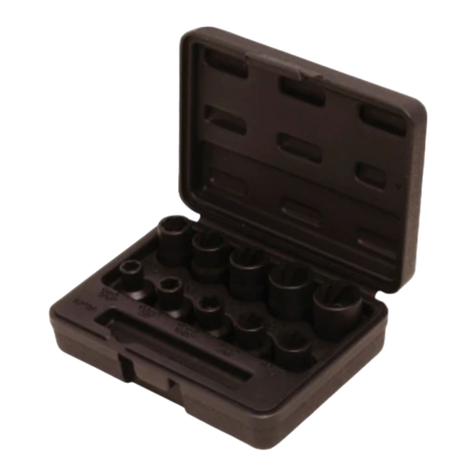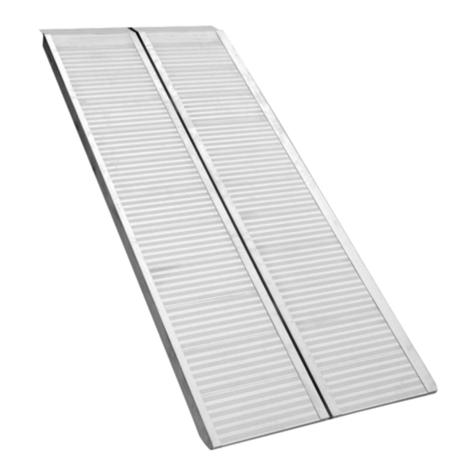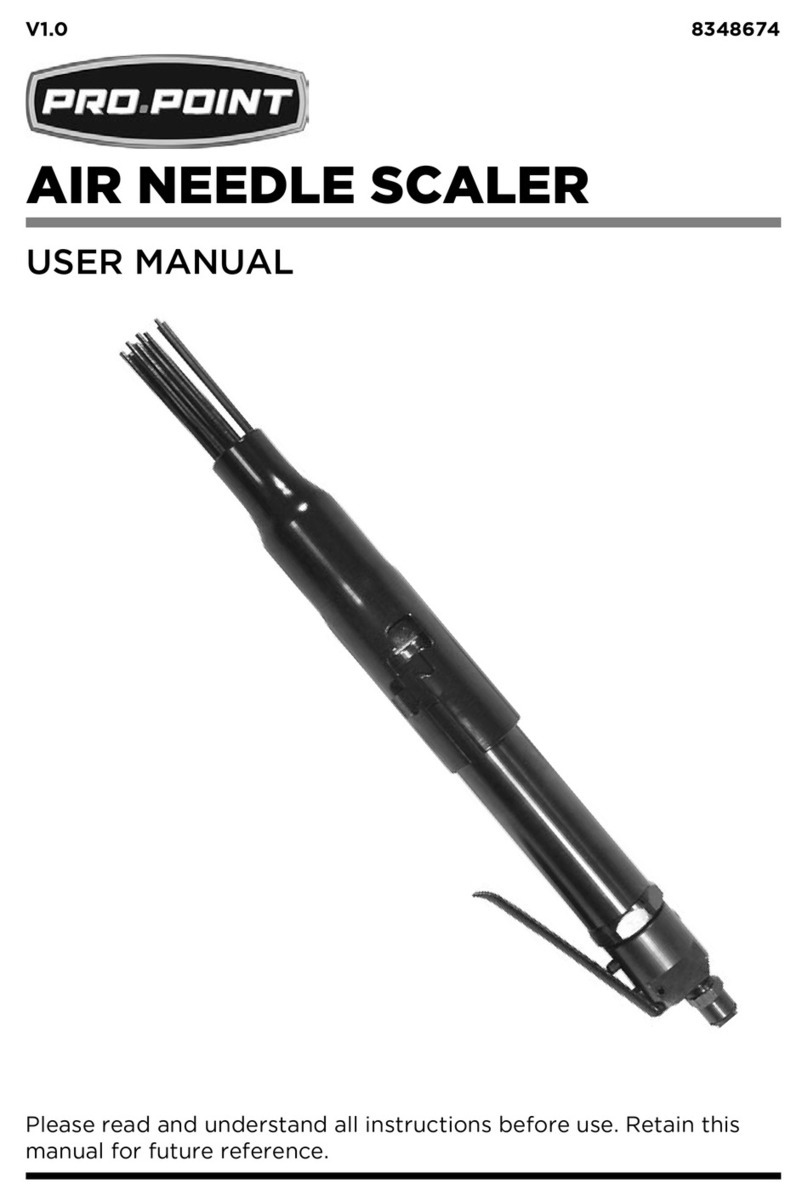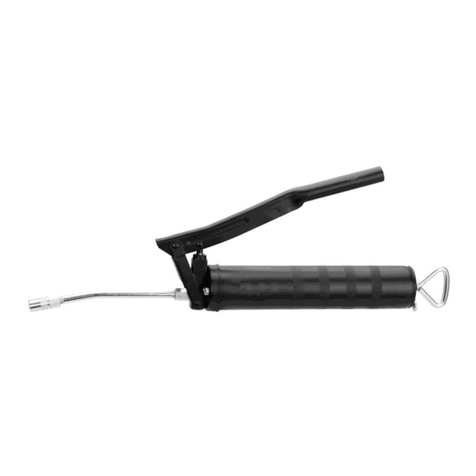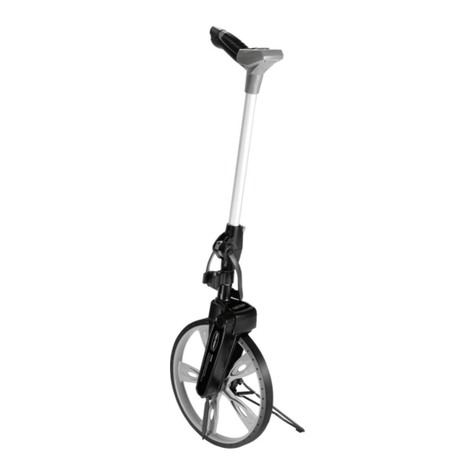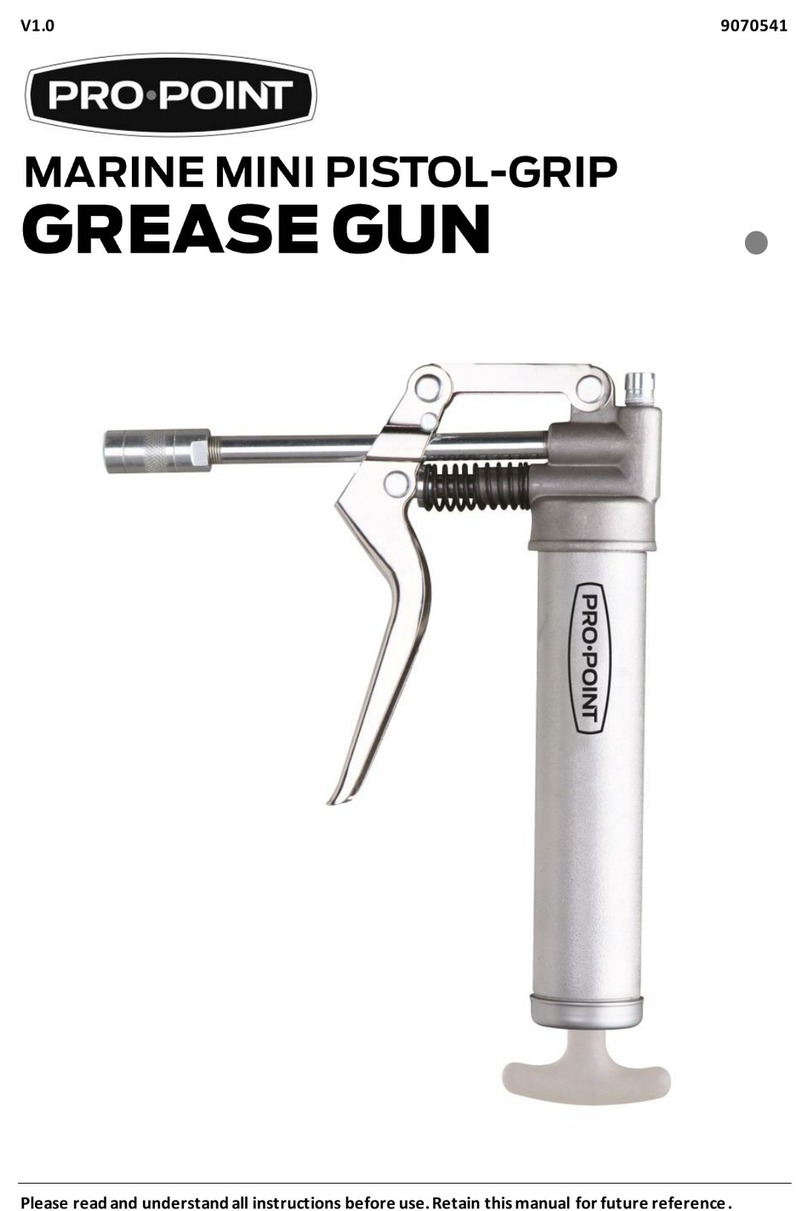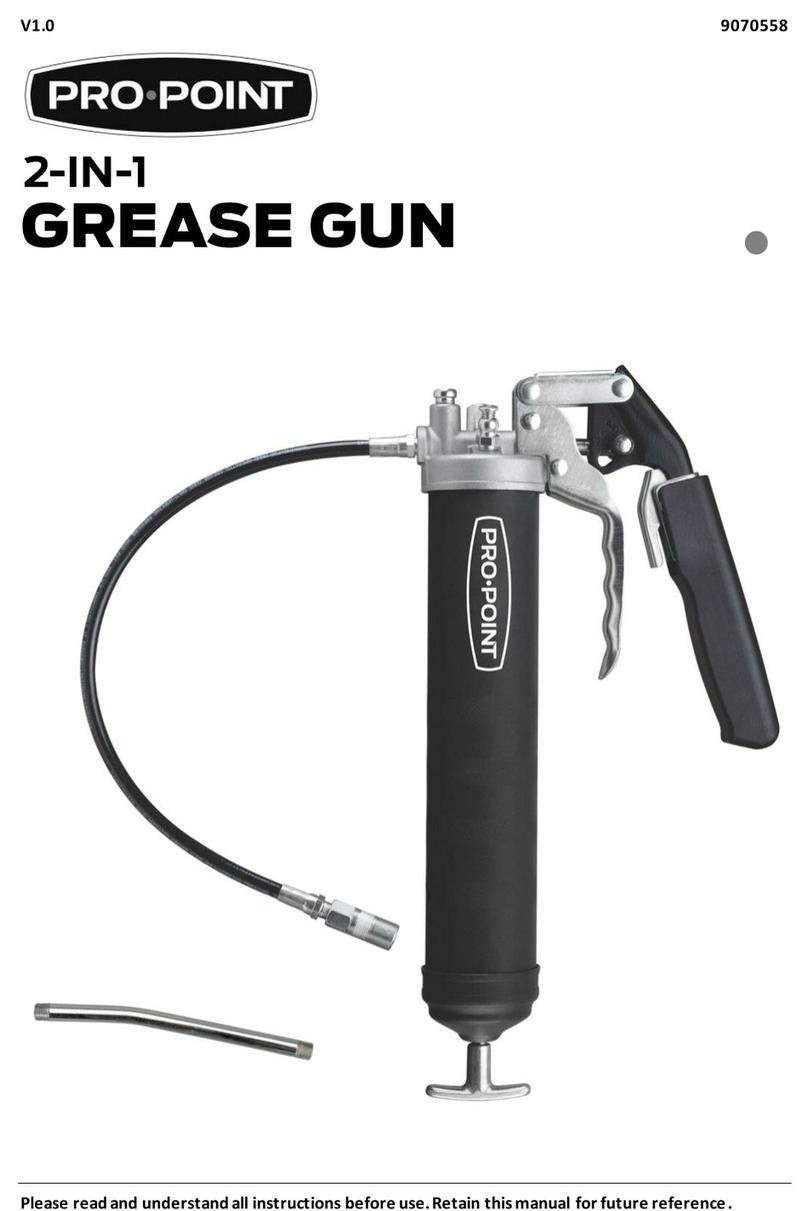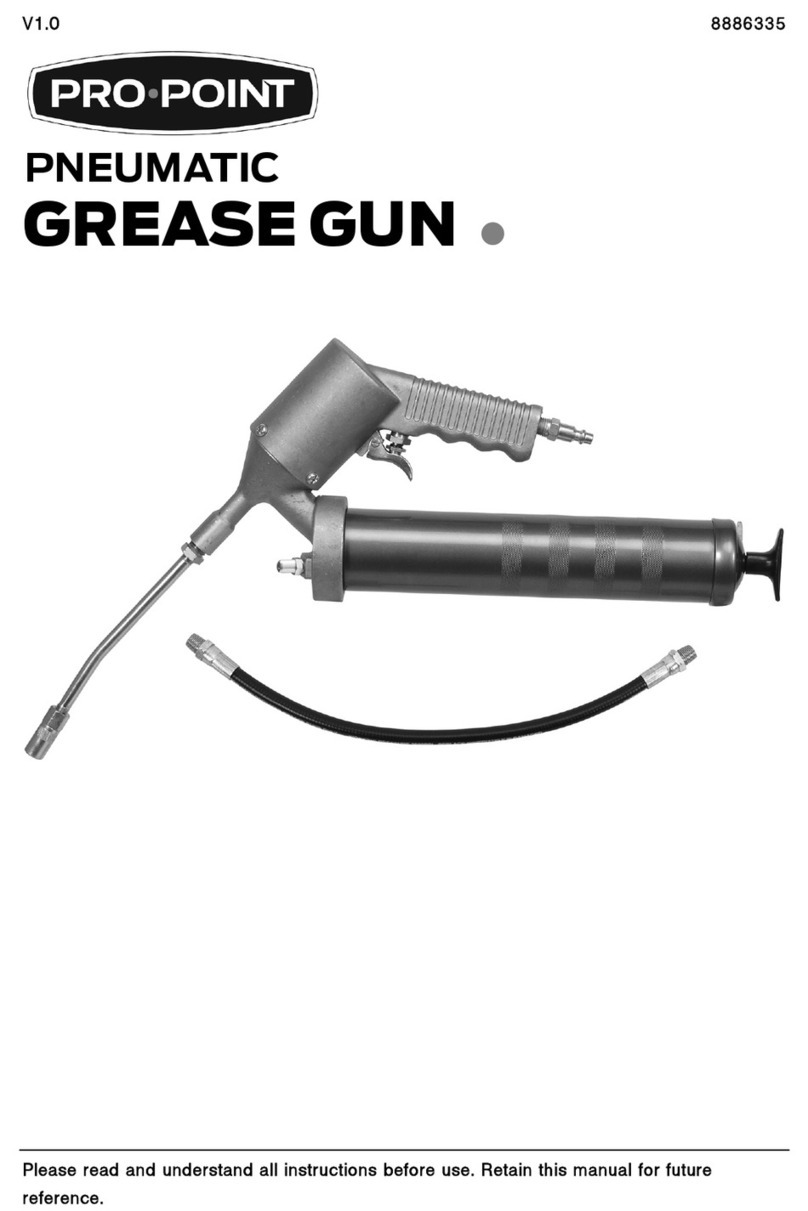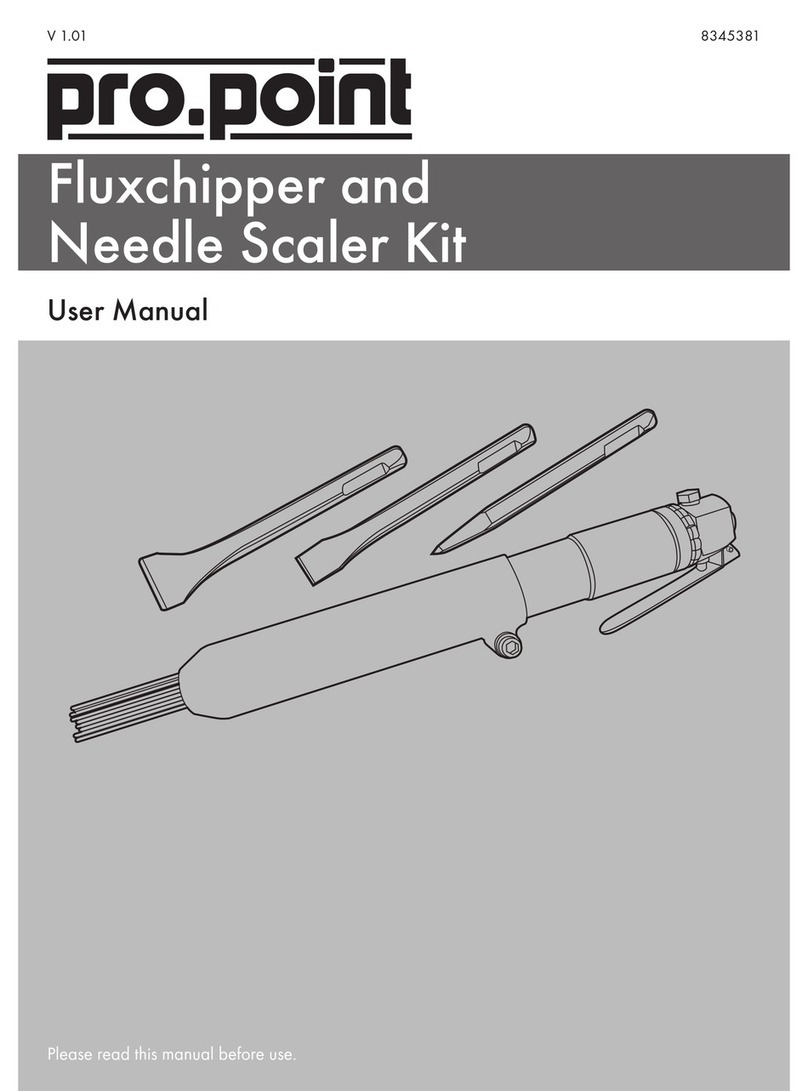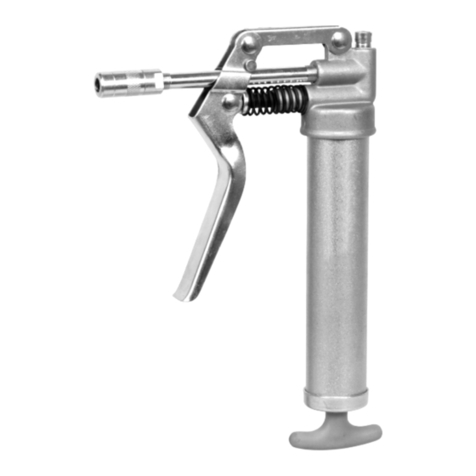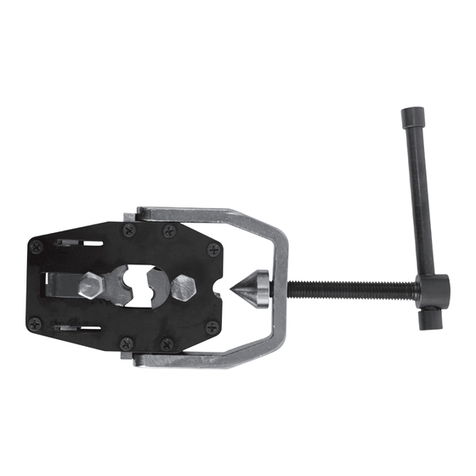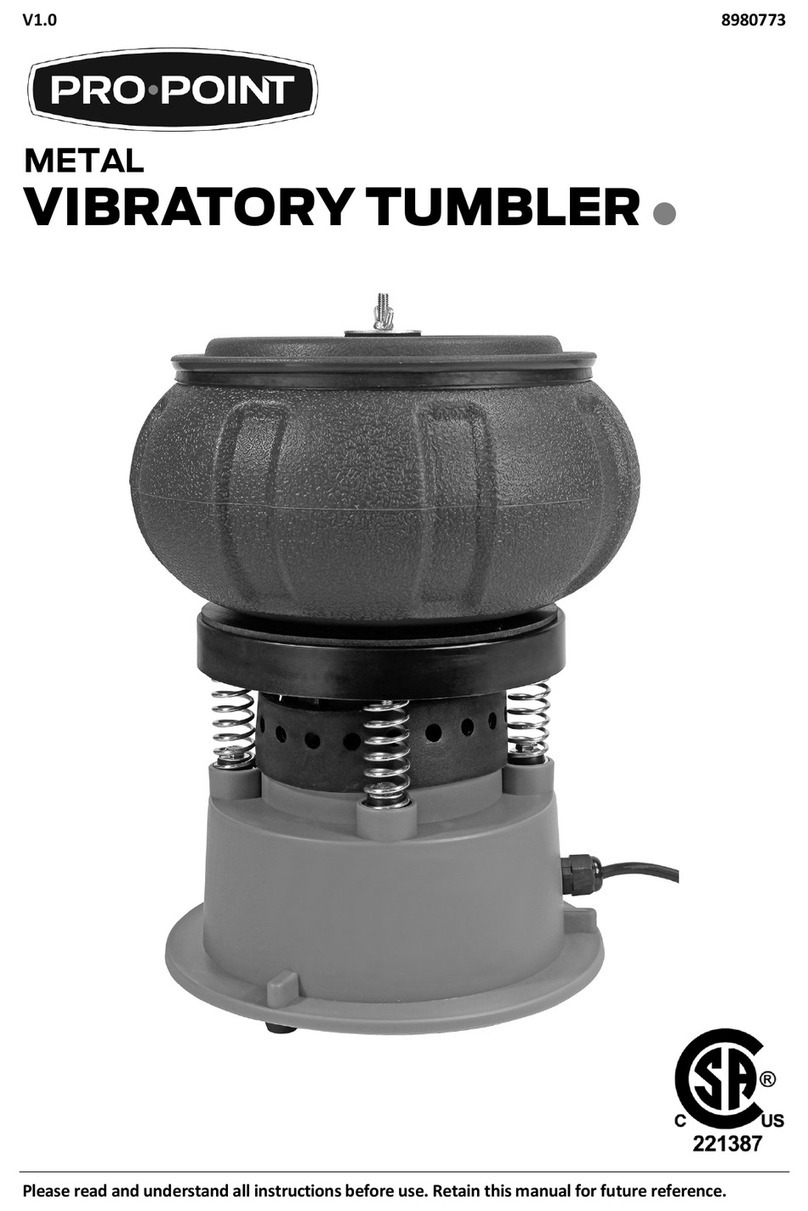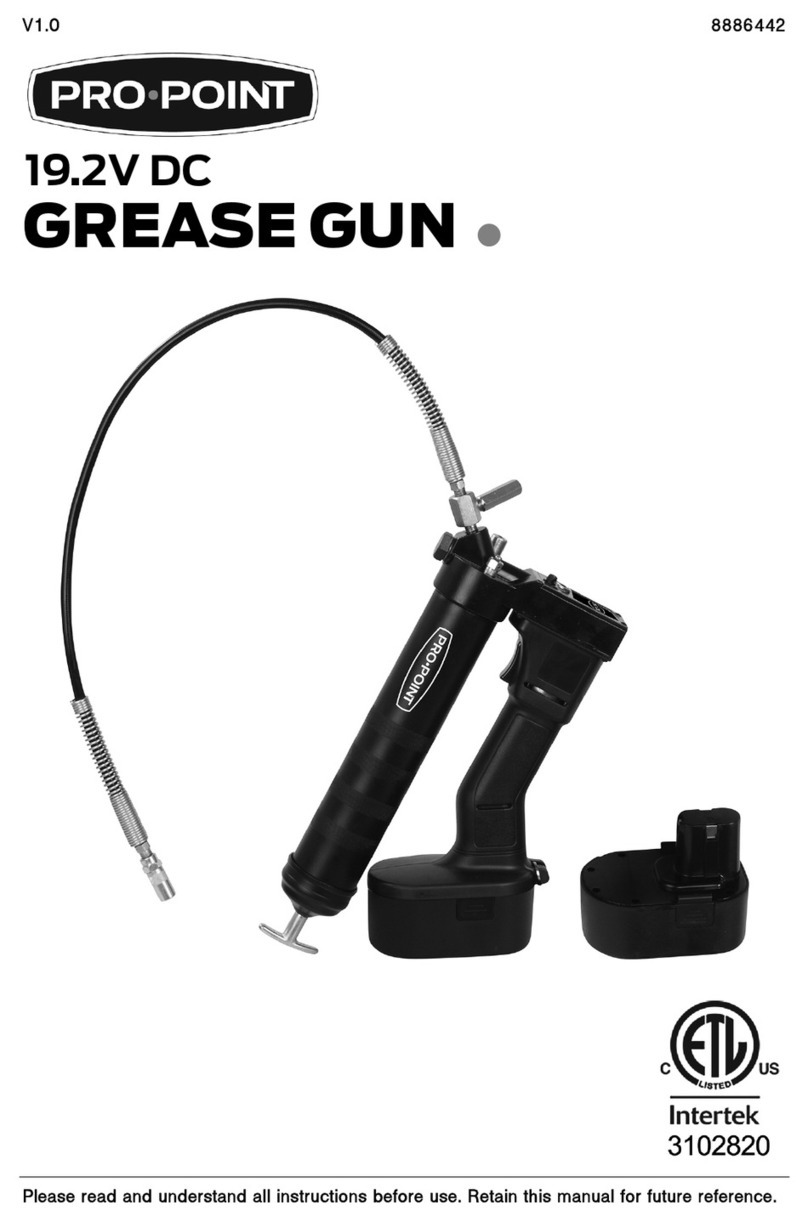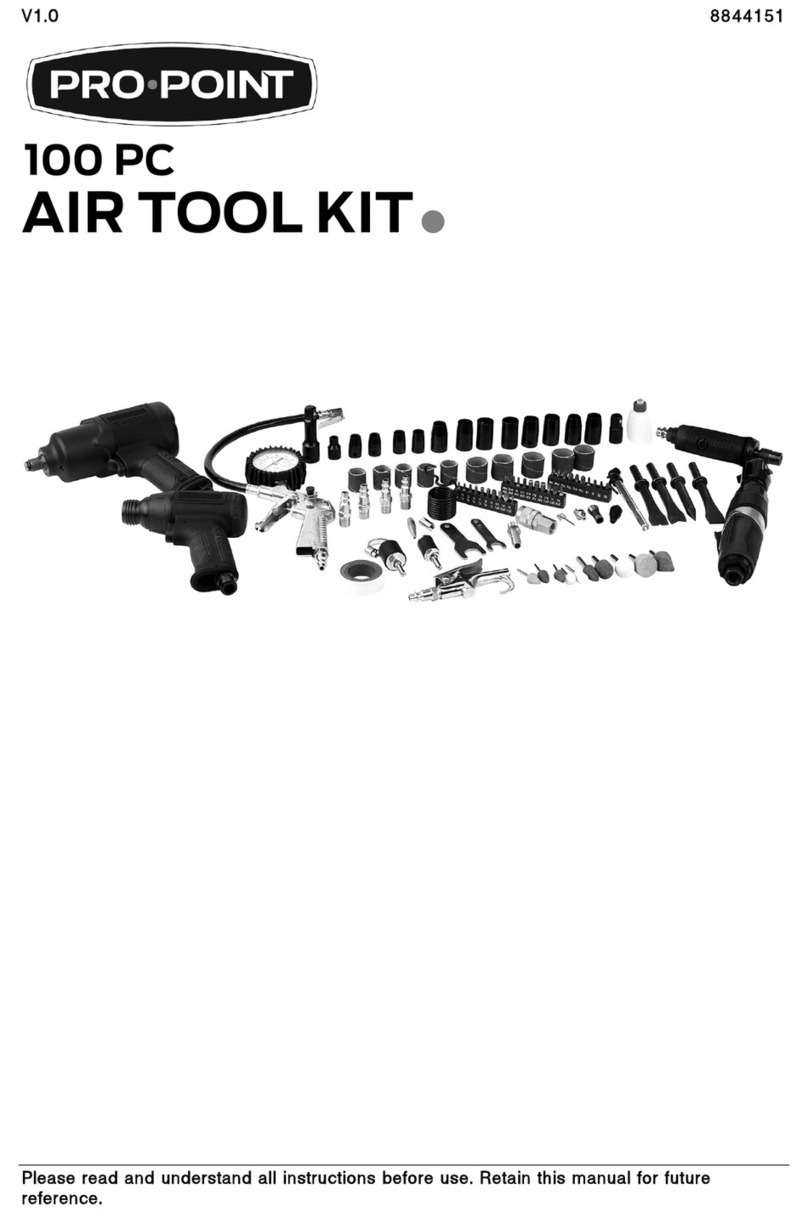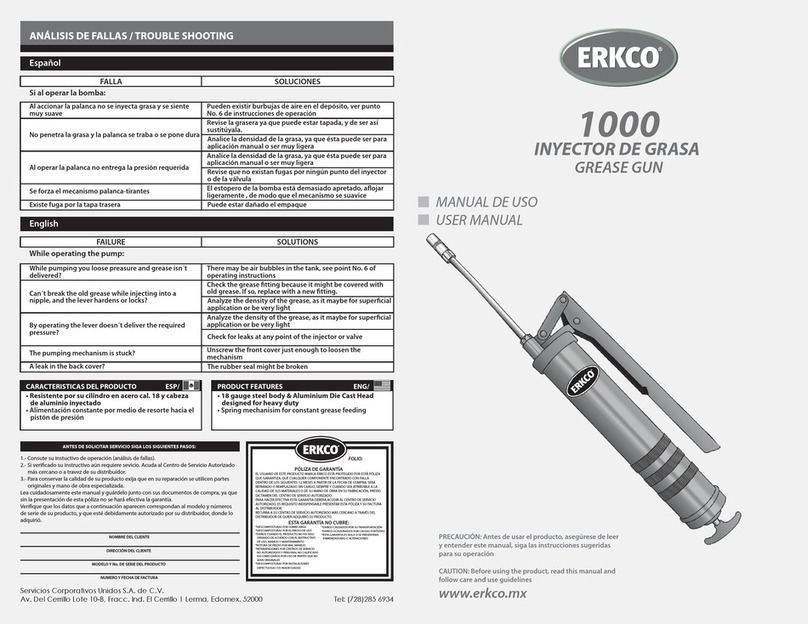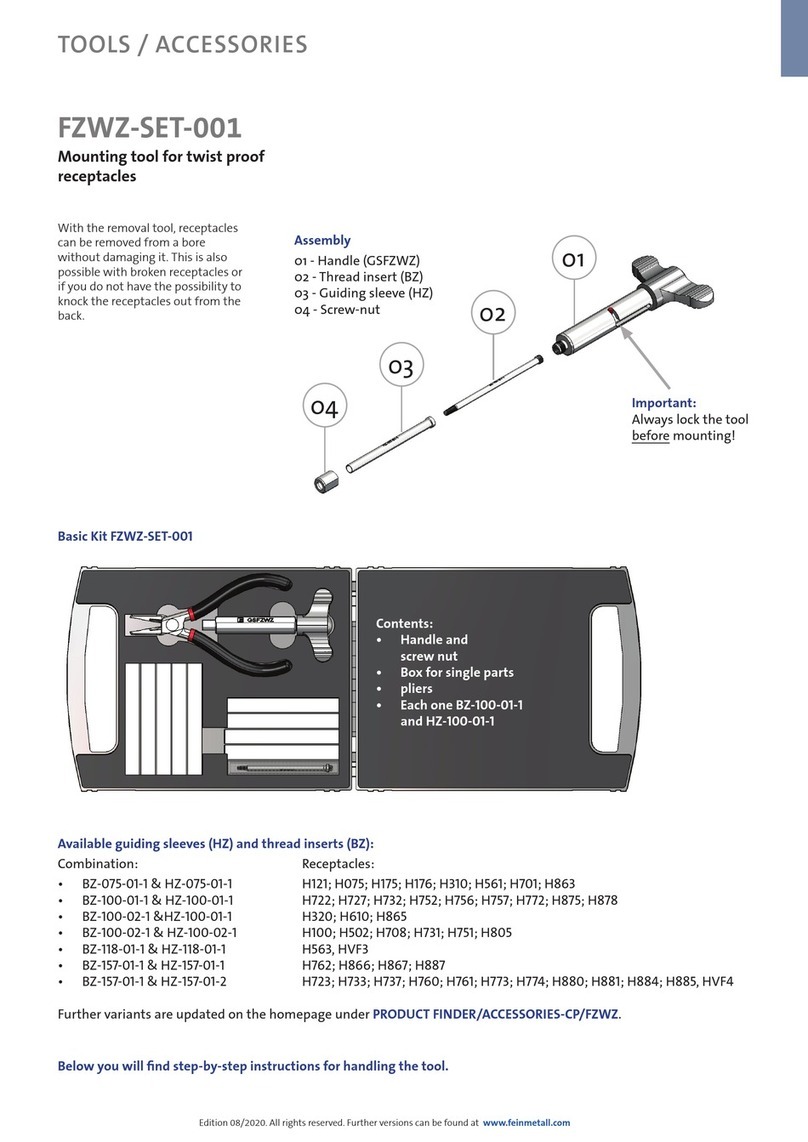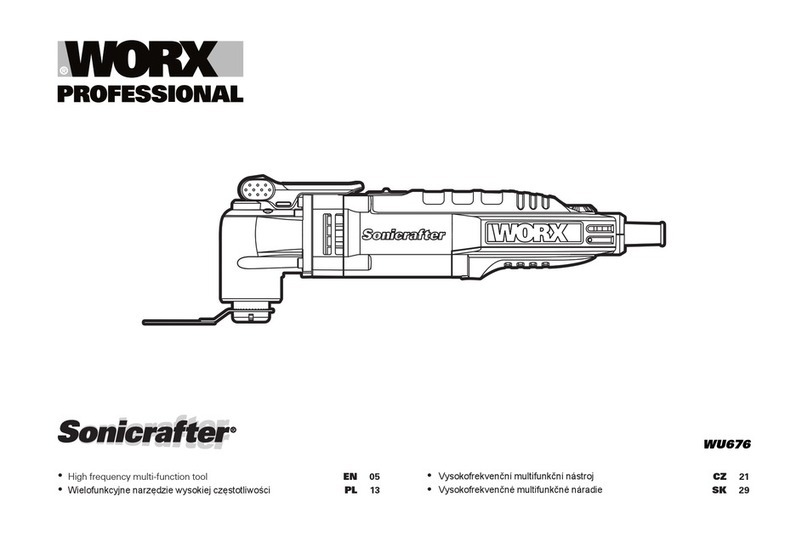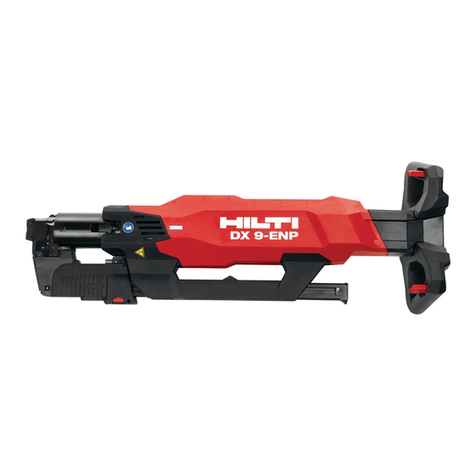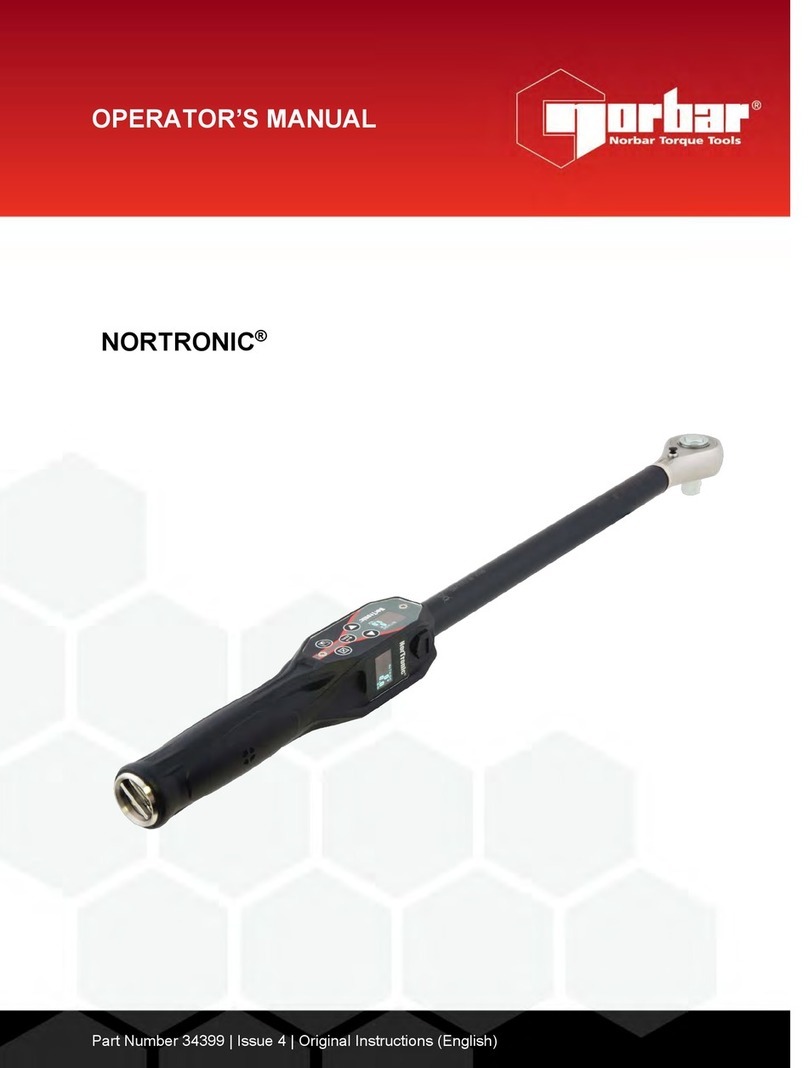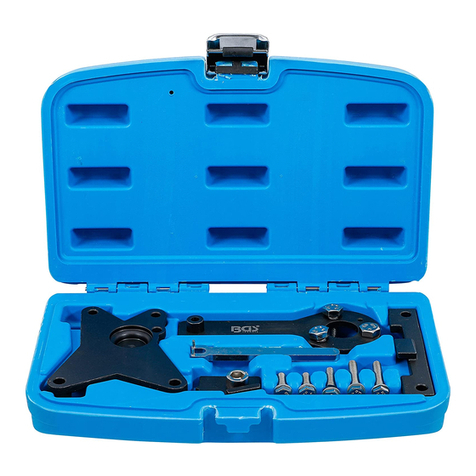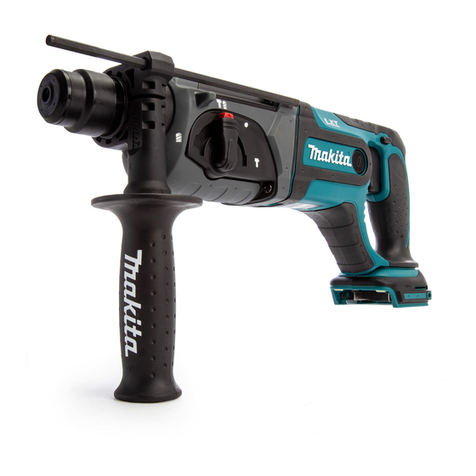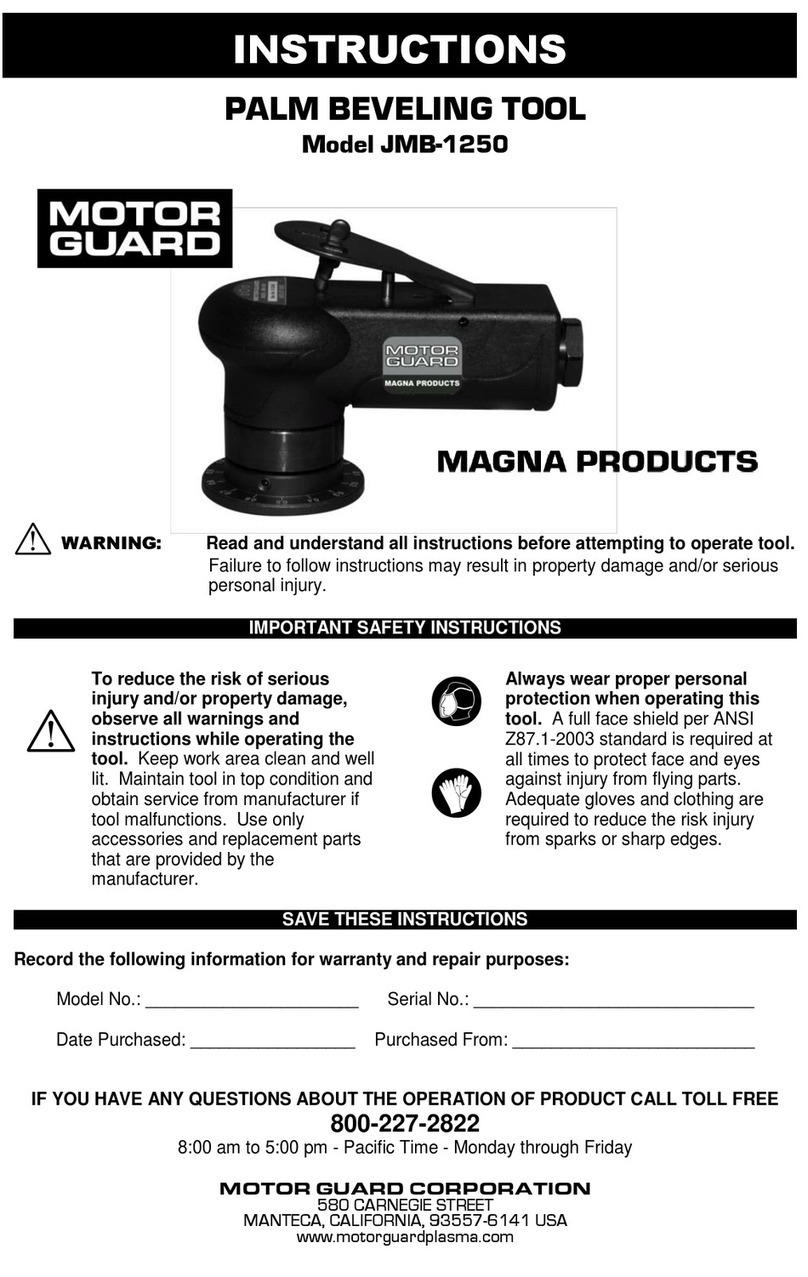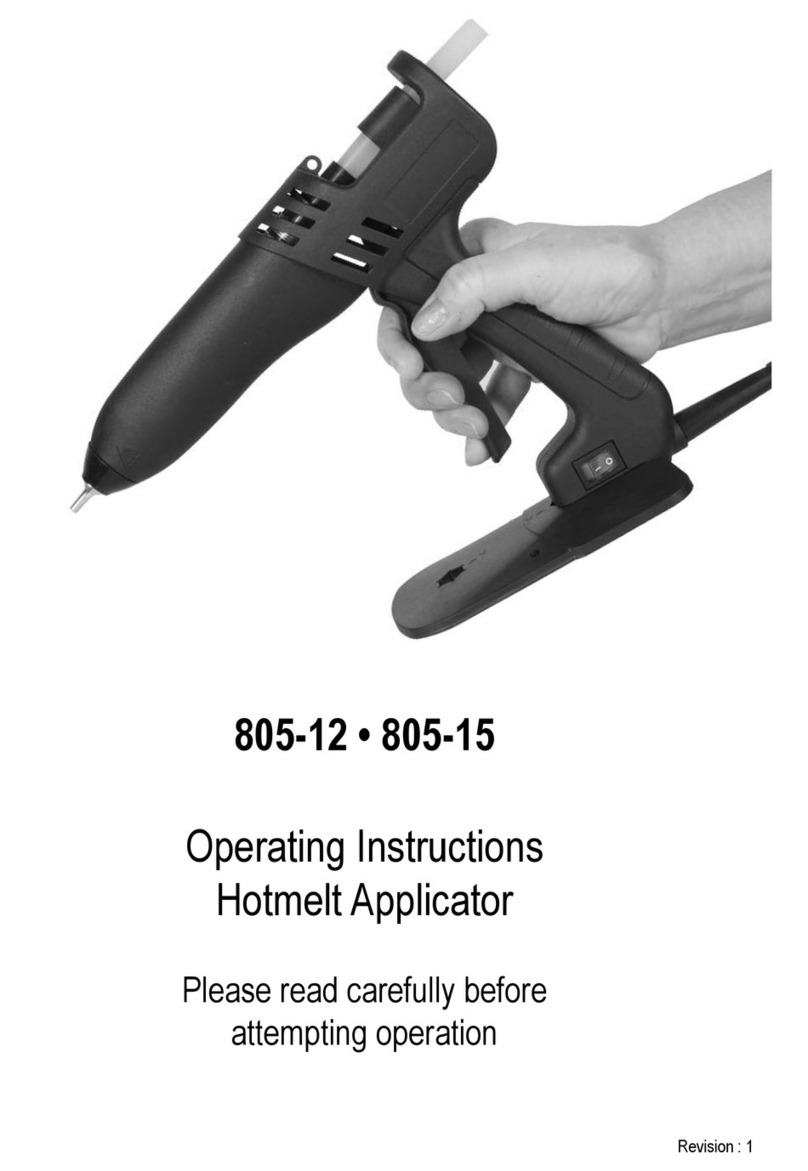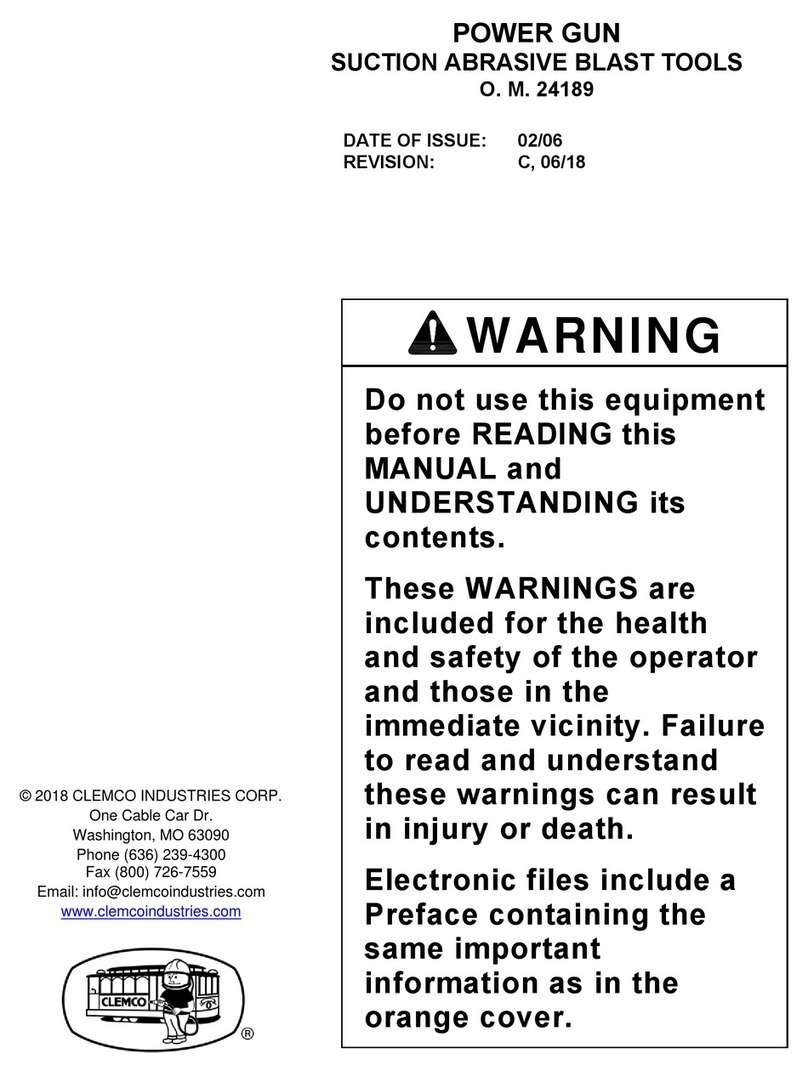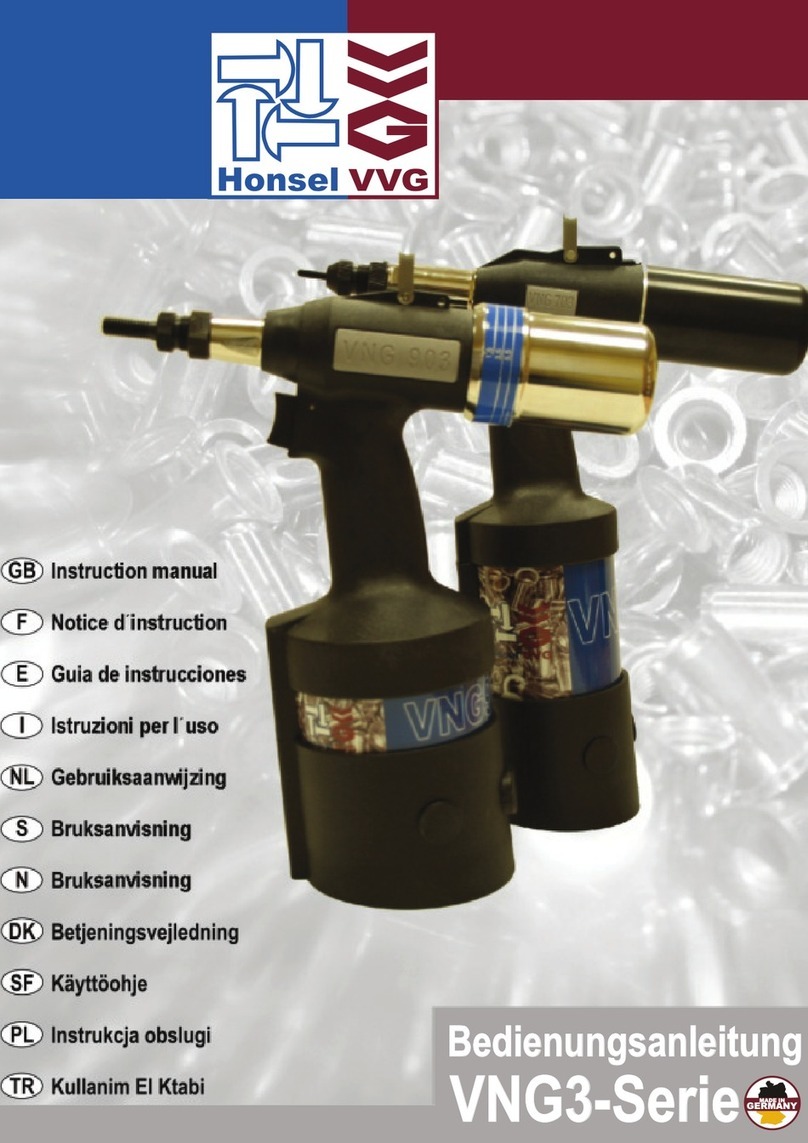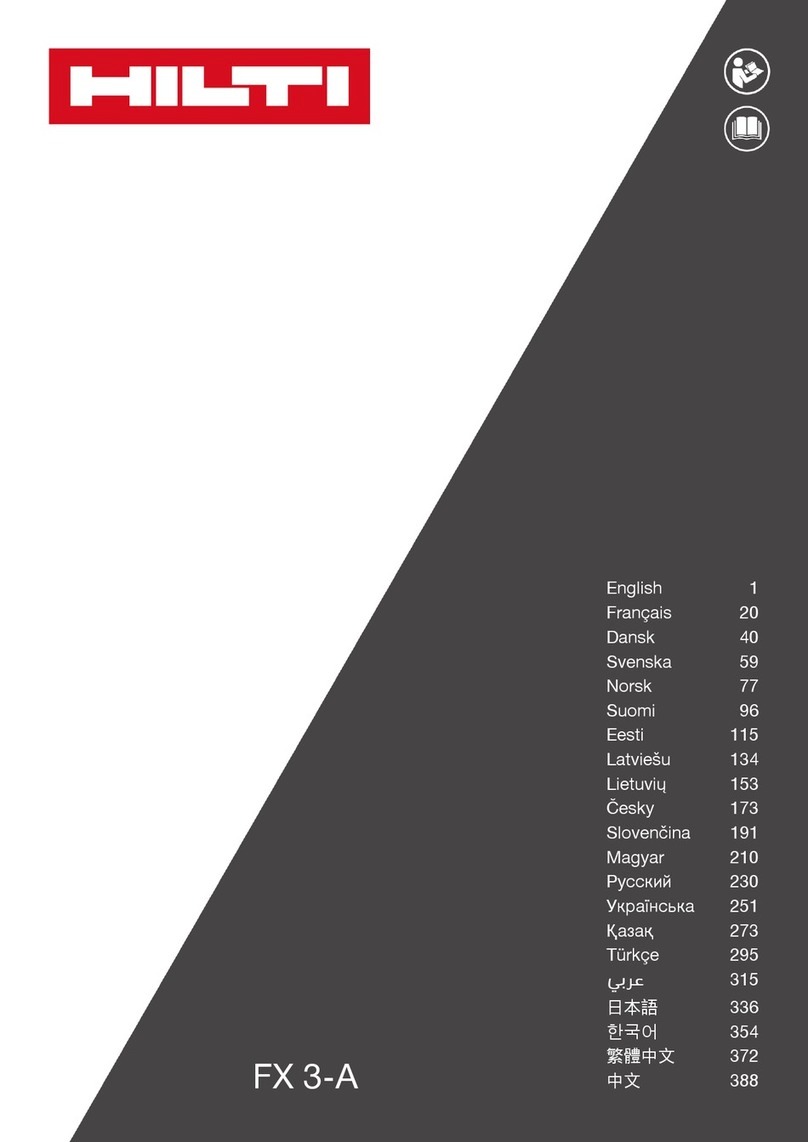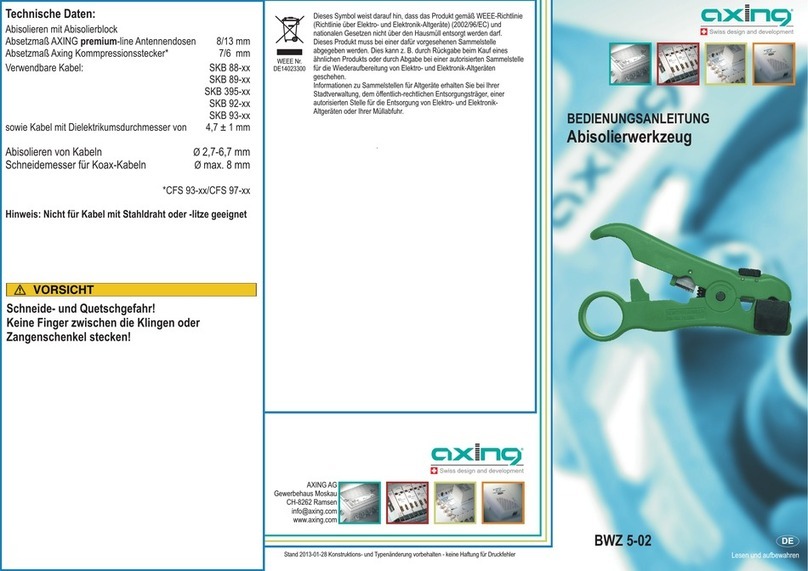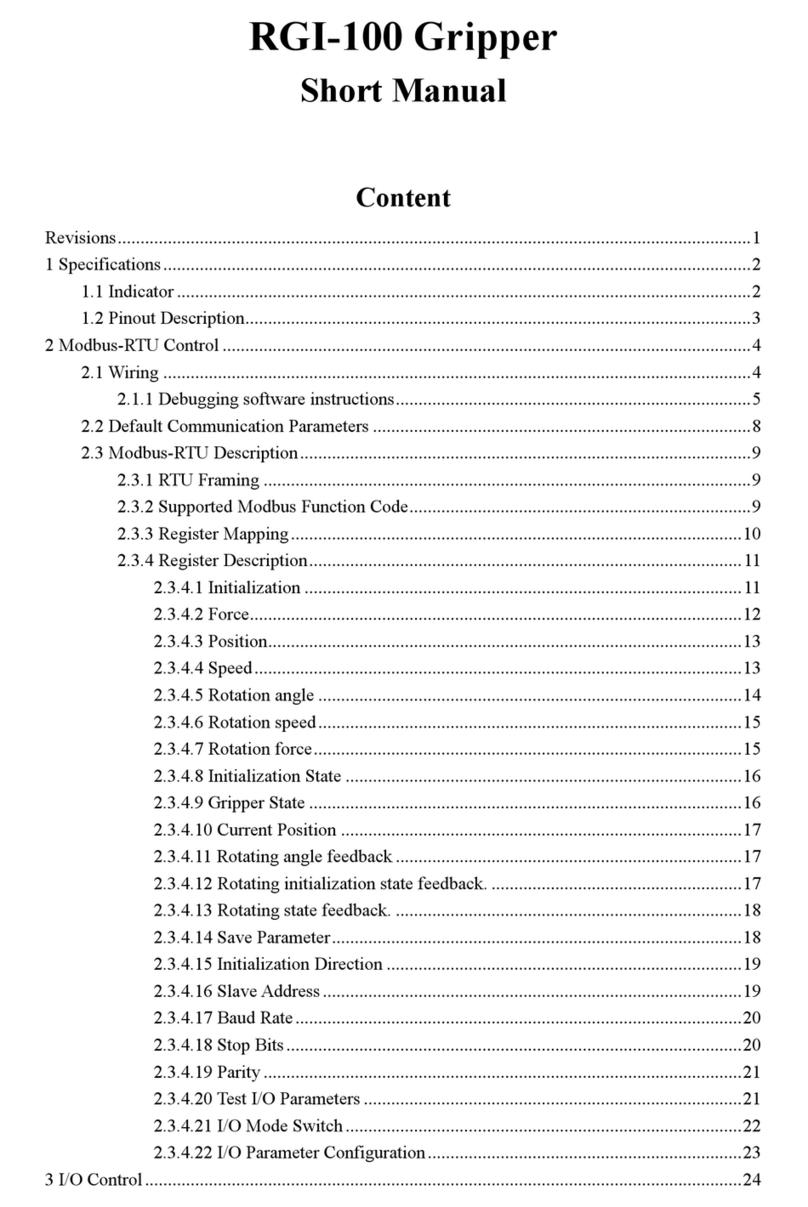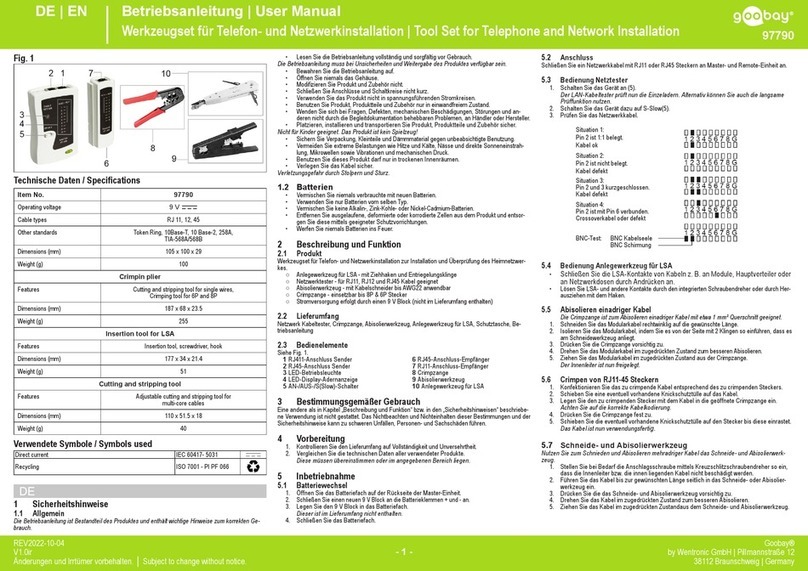18 GAUGE AIR BRAD NAILER
4 For technical questions call 1-800-665-8685
V 3.03 8344624
AIR SOURCE
1. Disconnect air supply. Disconnect tools
from air pressure source when not in use,
before cleaning, servicing or changing a
piece or accessory. After disconnecting,
discharge any residual air pressure.
2. Do not use tools if the trigger switch does
not function properly. Any tool that cannot
be controlled with the ON/OFF switch is
dangerous and must be repaired.
3. Use proper size and type of air pressure
line and fittings. The recommended air line
for a tool with a 1/4 in. inlet is 3/8 in. I.D.
4. Always verify prior to using a tool that the
air source has been adjusted to the rated
air pressure or within the rated air-pressure
range. Over pressurizing a tool may cause
bursting, abnormal operation, breakage of
the tool or serious injury to persons. Use
only clean, dry, regulated compressed air at
the rated range as marked on the tool.
5. Never use pure oxygen, carbon dioxide,
combustible gases or any bottled gas as an air source for a tool. Such gases are capable of
causing an explosion and serious injury to persons. Do not use an air source besides an air
compressor to power this tool.
6. Always use an air regulator, an in-line filter and a moisture trap in your compressed air
system. These accessories will increase the tool’s life and keeps the tool in good working
condition. See the diagram above for recommended components of an air line.
7. Drain the air tank daily. Water in the air line will damage the tool.
8. Clean air inlet filter weekly.
9. Avoid using an unnecessarily long air hose. Avoid using too long of an air hose. The
longer the hose, the lower the pressure will be at the end of the hose, to the point that
it may not meet the minimum required for the tool. As well, a longer hose can become a
tripping hazard.
10. Keep hose away from heat, oil and sharp edges. Check hose for wear, and make certain that
all connections are secure.
11. Always carry a tool by its handle, never carry the tool by the air hose.
12. Line pressure should be increased to compensate for unusually long air hoses (over 8
metres). The hose diameter should be 3/8 in. l.D.
13. Air tool CFM consumption ratings are based upon a 25% duty cycle. If you require continuous
duty, a larger compressor will be required (eg. 4.0 CFM tool at continuous duty requires 16.0
CFM to function at maximum torque).
AIR SOURCE INSTALLATION
1. Set the air pressure regulator on the air compressor to 90 PSI. Do not exceed the tool’s
recommended air pressure. Excess pressure could result in damage to the tool, to your work
piece or serious injury.
2. Prepare a standard 1/4 in. air connector for use with your tool. Wrap the threaded portion of
the air connector with thread tape. Attach it to the tool’s air inlet. Tighten securely.
3. Attach a standard quick connector to the air source’s hose. Attach the air hose to the tool.
NOTICE! If you are not using an in-line oiler, add a few drops of air tool oil in the tool’s air inlet before
use. In the same manner, add a few drops after every hour of use.
4. Check the air line and its connections for air leaks. Do not use this tool until you have
repaired all air leaks.
